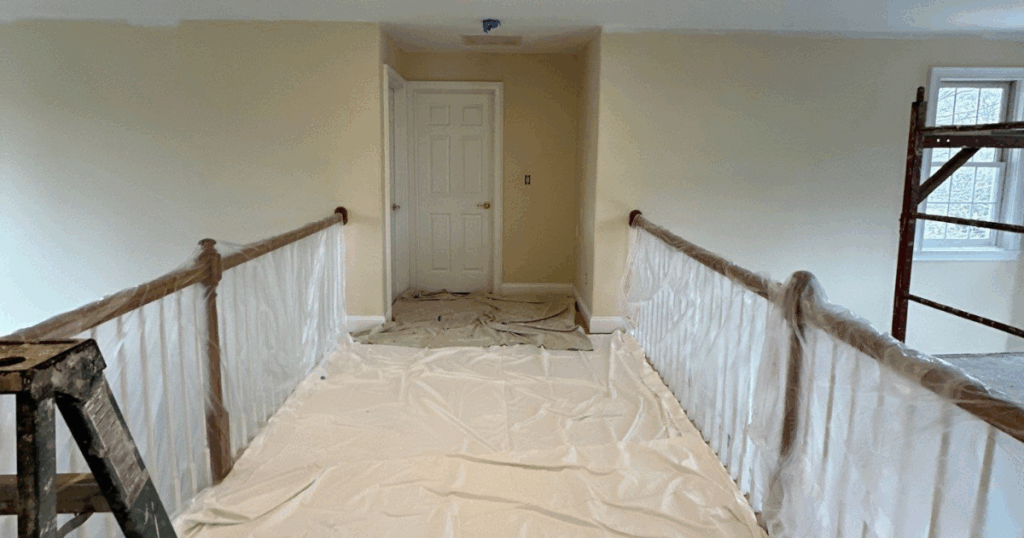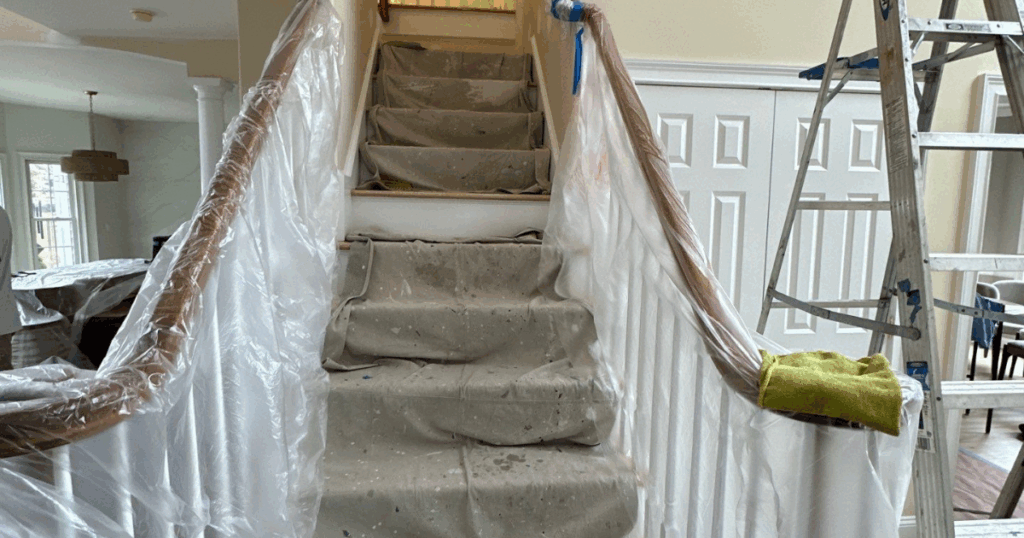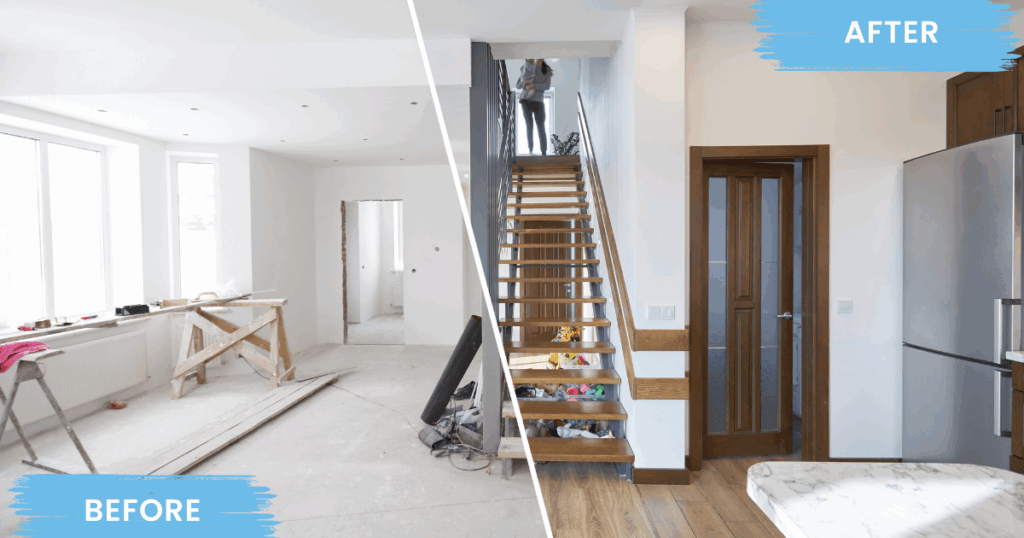When planning a home renovation, homeowners often face a common question: should you install new flooring or paint the walls first? The decision might seem minor, but getting it wrong can lead to unnecessary costs, delays, and frustrations. At A.G. Williams Painting Company, we’ve seen how the order of operations can impact the overall success of a project.
Our professional advice? Always finish your flooring before painting. This sequence not only protects your investment but also ensures a more efficient and polished renovation process.
Why Flooring Should Come First
1.) Protecting Your Paint Job from Accidental Damage
Installing flooring is an intensive process that often involves heavy equipment, large materials, and multiple contractors moving in and out of your space. Whether it’s hardwood, laminate, tile, or carpet, the tools used—such as nail guns, adhesives, and trowels—can easily bump, scrape, or stain freshly painted walls.

Imagine investing in a flawless paint job only to see it marred by a gouge or scuff mark the following week. By laying the flooring first, you eliminate this risk entirely, allowing your painting team to work on a clean and settled surface with no construction traffic left to worry about.
2.) Adjusting Baseboards and Trim for New Flooring Heights
One of the most overlooked aspects of changing your flooring is the adjustment of baseboards and trim. Different flooring materials have different thicknesses. For example, switching from a plush carpet to sleek engineered hardwood can lower your floor height by up to an inch. This means your baseboards, which were once snug to the carpet, now need to be lowered to meet the new floor level.
If your walls have already been painted, adjusting or removing trim can damage the paint and lead to costly touch-ups—or even a full repaint. By completing flooring installation first, these adjustments can be made without disrupting a fresh paint finish.
3.) Better Color Coordination with Finished Floors
Choosing the right paint color can be challenging, especially when trying to visualize how it will look with your new floors. Having the flooring installed first allows you to make more informed decisions about wall colors. You can compare paint swatches directly against your actual floors, rather than relying on small samples or guessing how the tones will work together.
This approach leads to better color harmony and a more cohesive design. It also opens up opportunities to explore color trends and palettes offered by reputable sources like Benjamin Moore and Sherwin-Williams, ensuring your home stays stylish and inviting.
Addressing Common Concerns
Won’t Paint Spill on the New Floor?
Understandably, homeowners worry about paint dripping or spilling onto their new floors. However, experienced painting contractors like A.G. Williams Painting Company are well-equipped to handle this. We use professional-grade drop cloths, plastic sheeting, and painter’s tape to thoroughly protect your flooring.
Our teams are trained to work cleanly and efficiently, ensuring that your floors remain pristine from start to finish. In fact, the risk of damaging floors during painting is significantly lower than the risk of damaging walls during flooring installation.

Isn’t It Easier to Paint First with an Empty Room?
While painting an empty room might seem simpler, flooring installation still poses a threat to freshly painted surfaces. Besides, rooms can be emptied after flooring is installed just as easily. The slight convenience of painting first is quickly overshadowed by the potential for wall damage during flooring work. Prioritizing the long-term outcome will save you time and headaches later.

How to Protect New Flooring During Painting
Protecting your new flooring is straightforward with the right tools and techniques:
- Use High-Quality Drop Cloths: Opt for heavy-duty canvas or non-slip drop cloths that stay in place and provide full coverage.
- Secure Plastic Sheeting with Painter’s Tape: Cover large areas with plastic and tape down edges for added security, especially along walls and baseboards.
- Use Tape Wisely: For carpeted floors, use wide strips of painter’s tape around the perimeter, then tuck it under the baseboard with a putty knife for a neat edge.
- Clean Up Immediately: If any drips or splatters do occur, wipe them up right away to prevent staining or long-term damage.

Are There Any Exceptions?
In some cases, it might be okay to paint first:
- If You’re Only Touching Up: A few quick paint touch-ups after flooring might not warrant a full repaint.
- Pre-Finished Flooring: Some pre-finished or snap-together flooring systems are easier to install without risk of wall damage.
- Emergency Repairs: If your flooring is delayed due to supply chain issues, and painting needs to stay on schedule, adjustments may be necessary.
However, these are rare scenarios. When possible, flooring before painting remains the ideal route.

What the Experts Say
Industry professionals overwhelmingly recommend installing flooring before painting. According to experts at PaintRite Pros, painting after flooring prevents unnecessary damage to walls and ensures a cleaner finish. Similarly, Virgin Carpets emphasizes that placing floors first allows homeowners to make better aesthetic choices for wall color and finish. These insights echo what we’ve seen at A.G. Williams Painting Company time and time again—preparing your surfaces in the right order pays off.
In summary, the order in which you approach your home renovation matters more than you might think. By choosing to install flooring before painting, you safeguard your investment, improve efficiency, and set the stage for a beautifully finished space. At A.G. Williams Painting Company, we bring decades of experience and professionalism to every project, ensuring that our clients receive expert guidance and impeccable results.
Ready to get started on your next home improvement project? Contact A.G. Williams Painting Company today to schedule a consultation. Let’s bring your vision to life, from the ground up.